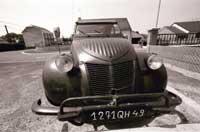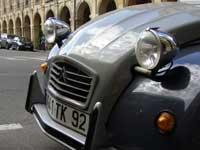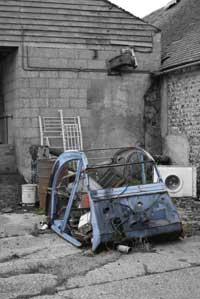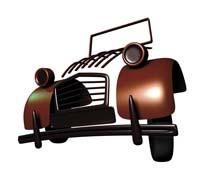Life, more than one icon
2011/02/13 Roa Zubia, Guillermo - Elhuyar Zientzia
The first model of Citr in 2CV had 8 horsepower. A misunderstanding, however, rooted in popular tradition the belief of having 2 horsepower, which gave the car the name that street people have long used. In French, deux chevaux and in Spanish, two horses and in Basque, they call it life.

But the name 2CV did not indicate power, but had a two-cylinder V-shaped engine. Total 375 cc. It is a small engine from current standards, but if you look at that time, Citr invented everything. This engine had very low consumption and was a good car for citizens.
At the time when life was designed, in the 1930s, France was mostly a rural village. Therefore, the general manager of the company Pierre Boulanger Citr asked the engineers to design a car for them. The order was very clear, only the car had to have essential elements to operate. “Four wheels under an umbrella,” he said. In addition, it had to meet some simple conditions: on the one hand, there had to be a space for two champions; on the other, it had to bear a load of 50 kilos and, in addition, it had to transport a box filled with egg in a growing area without breaking the eggs. The first prototype created in 1936, model of 8 horsepower, met all these requirements. The egg transport test is also filmed.
And it was not just that. It had to necessarily be a cheap car for farmers to buy. To do this, the design resorted to the minimums. For example, it had the only previous light, since in France they did not ask by law to have two lights. And it had aluminum body, a very cheap metal. The problem was that aluminum is not a very resistant material, so Citr contracted the front sheet and increased hardness without the car becoming much more expensive.

The Bizaldi was not sold at the time, but wanted to be presented at the Paris car fair in 1939. But that year, while Citr manufactured prototypes, Hitler entered Poland. On 3 September, France and England declared war on Germany and the French left the fair. Those of life,
a work of engineering so appropriate for the work of the peasants, feared that Citr would end up in the hands of the Germans. By then he had already manufactured 250 units and Boulanger decided to destroy them all, except one (four units according to sources). The car is dismantled and the pieces are hidden in a farm until the end of the war.
After the war and until France regained normality, several years passed. The Citr people completed their lives again and made some adaptations. For example, the engine was subjected to a waterless cooling system. An engine that does not need water cannot be damaged due to lack of water. On the other hand, the aluminium sheet was replaced by steel.

Citr presented his car at the Paris fair in 1948. The new model consisted of a 9-horsepower car, with a consumption of less than five liters in 100 kilometers, a speed of 65 kilometers per hour and a surprising suspension system capable of not turning the car. Sales were spectacular. In 1950 there was a six-year waiting list to buy a life. That
of life remained very successful until 1990. Citr sold a total of 3,800,000 copies.
Published in 7k

Gai honi buruzko eduki gehiago
Elhuyarrek garatutako teknologia




